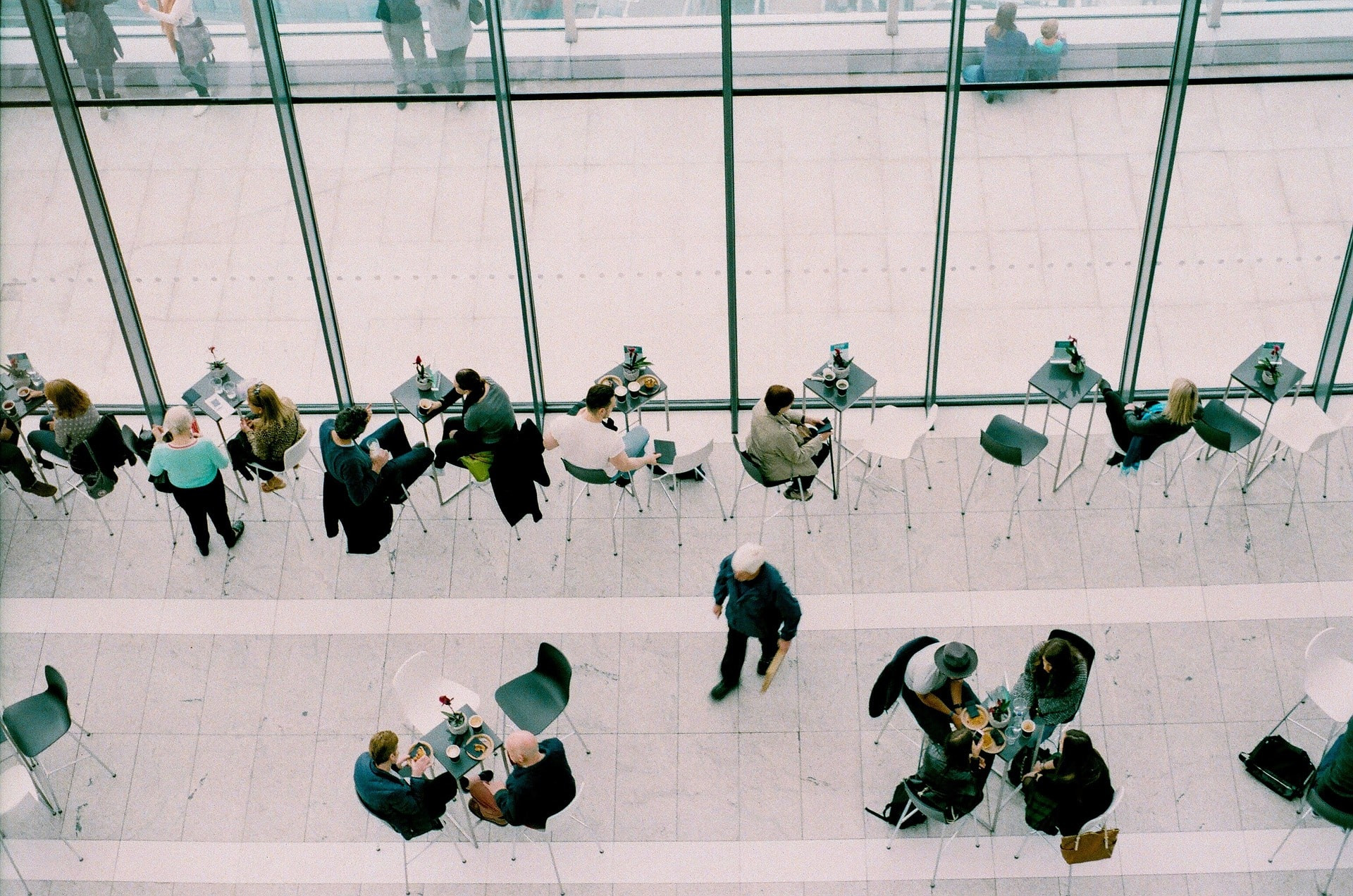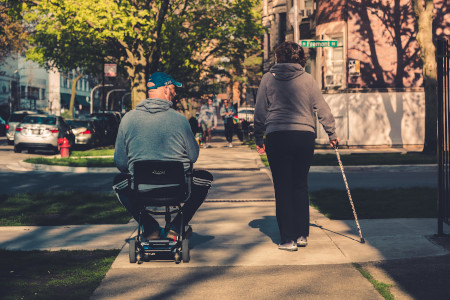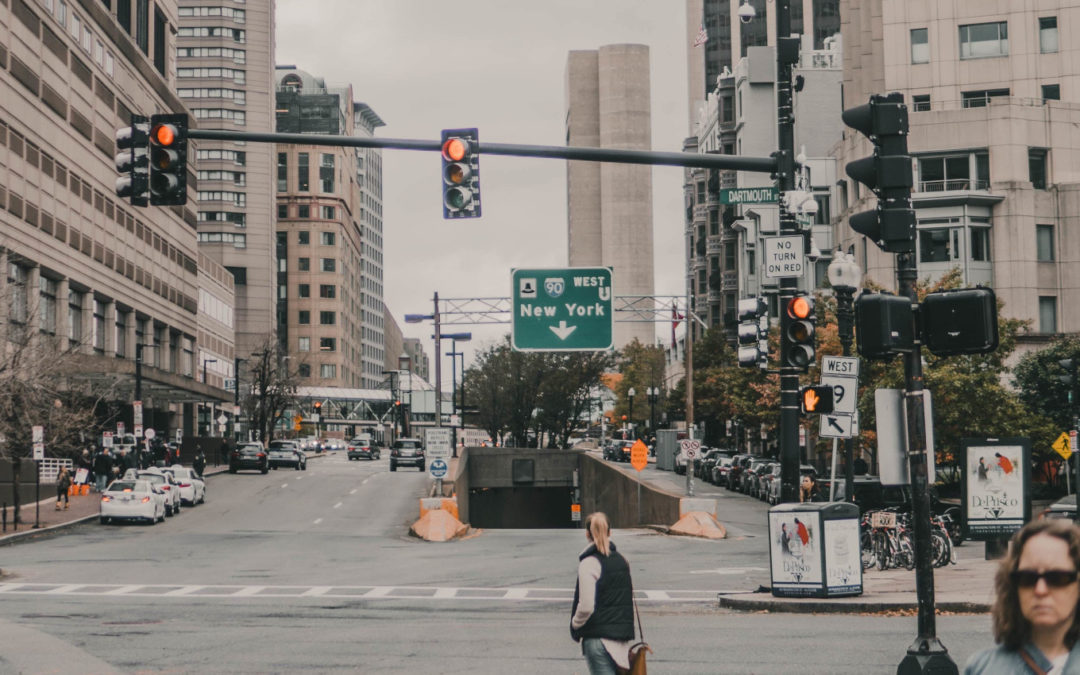
What You Need to Do to Ensure Accessibility for People with Physical Disabilities at Public Venues
Are you certain your public venue is accessible to people with physical disabilities, including people with reduced mobility and wheelchair users? Where exactly is it necessary to have accessibility? What does the law say? What types of equipment can you set up?
Enhancing accessibility for your public venue will enable you to provide your users with physical disabilities with the best possible experience. We all know a satisfied customer will happily come back to your venue and will be more likely to spread the word about this fantastic place they’ve been to!
And to shed some light on what you can undertake, here we’ve compiled everything you need to implement to make sure your public venue is entirely accessible and ADA-compliant to welcome people with physical disabilities!
Accessibility for people with physical disabilities at public venues: what regulations to apply?
Without any surprise, the Americans with Disability Act (ADA) is the one to strictly follow. Since 1990, the law aims at ensuring people with disabilities have access to the same rights and services as anybody else. Thus applying to public venues. If you manage a public venue such as these, you need to think about accessibility:
⊗ Stores and shopping malls,
⊗ Bars and restaurants,
⊗ Hotels,
⊗ Banks,
⊗ Public services such as city halls,
⊗ Colleges and universities, private schools…
⊗ Amusement parks,
⊗ Hospitals,
⊗ Places of worship,
⊗ Cultural places like museums, movie theaters, stadiums…
For all these public venues, the ADA requires not only that the building in itself to be accessible but also all the services the venue provides. The goal of this law is to ensure there’s no discrimination against people with disabilities by removing accessibility barriers.
Existing buildings and new ones need to be ADA-compliant. Of course, it can be difficult for existing buildings to be completely accessible seeing that some are very ancient. Some would need to undertake major renovation works to enhance accessibility which could be very expensive. But the ADA states that they need to make “reasonable modifications” to suit the needs of people with disabilities. Plus the act emphasizes on communicating effectively with them.
What solutions can you implement to enhance accessibility for people with physical disabilities?
There are a lot of things to consider to ensure your public venue is indeed accessible to people with physical disabilities. Keep in mind that people with mobility challenges don’t only concern wheelchair users, some people may use scooters, walkers or canes. The challenge is ensuring a seamless mobility chain so that people with physical disabilities can go from point A to C without any difficulties. Meaning that point B can easily link points A and C. But be reassured: the solutions you can implement to remove accessibility barriers are simple. Let’s take a look at them!
Accessibility outside your venue
Let’s start with what you can do to make sure people with physical disabilities can easily have access to your building:
⊗ PRM parking spaces: They need to be easily spotted with horizontal and vertical signage. And they need to be close to your building entrance to make the trips of people with physical disabilities easier.
⊗ A clean and smooth ground without any major obstacles or potholes.
⊗ Large exterior circulations for wheelchair users to move freely.
Accessibility at your venue entrance
Obviously, your building entrance needs to be accessible if you want people with disabilities to enjoy your venue:
⊗ Access ramps: You can set up a permanent one instead or in addition to stairs. Make sure to respect the ADA requirements: ramps must be a minimum of 36 inches wide. They need to have top and bottom landings as wide as the ramp itself and at least 60 inches long. As for the slope, it needs to be greater than 1:20 and less than 1:12. A removable ramp also does the job: make sure it’s easy to use or that there’s a call button within reach so that wheelchair users can make their presence known.
⊗ Large doors: Indeed they need to be large enough to make sure wheelchair users can enter your venue.
Accessibility within your venue
This is where you may need to step up your game to guarantee accessibility for people with physical disabilities! Let’s see what it entails:
⊗ Anti-slip mats: Mats at entrances, whether located just in front of the doors or right beyond, are necessary against dirt or mud but they also need to be accessible for wheelchair users. That’s why ADA-compliant floor mats have to be non-slip, robust enough and have the appropriate size and thickness to ensure wheelchair accessibility.
⊗ Universal pictograms so that your users with physical disabilities are aware of what services are accessible to them.
⊗ An accessible information desk and/or checkout: These services need to be easily identified thanks to a clear signage system. Plus lowered counters are easier for wheelchair users to see and be seen by your staff but also communicate effectively with them. And having a staff trained to best suit the needs of people with disabilities is priceless in terms of quality experience!
⊗ Elevators, escalators or access ramps so that your users with physical disabilities can access everything your venue has to offer!
⊗ Large aisles for wheelchair users to move without any difficulties. Thanks to large aisles, they can easily make a u-turn.
⊗ Accessible seating areas.
⊗ Accessible restrooms: They need to be clearly identified thanks to the use of pictograms. Its equipment consists of a lowered sink and counter for handwashing, a higher toilet seat, grab bars on the wall closest to the toilet and behind the toilet, a bathroom emergency pullstring, and enough space for wheelchair users to easily make a u-turn. Every piece of equipment needs to be at the same level as wheelchair users for better comfort.
⊗ Indoor navigation app: It’s particularly useful for users with physical disabilities to apprehend a new and complex environment. The app Evelity designed by Okeenea adapts perfectly to its user profile. For wheelchair users and people with reduced mobility, it provides optimized routes. Meaning that Evelity will guide them to use stair-free routes only.
As you can see, providing accessibility to your users with physical disabilities isn’t as tricky as it seems! Implementing these solutions will help you attract more users or customers to your venue. Even if you can’t undertake major and expensive renovation works, a digital solution can improve the accessibility of your venue! Thanks to all these different solutions and equipment, inclusion truly is within reach!
Would you like to know more about physical disabilities? Dive in with:
8 Tips to Welcome a Person with Physical Disabilities
9 Must-Have Apps for People with Physical Disabilities in 2020
Obstacles in Public Transport: What Solutions for Physical Disability?
media

Keep in mind that people with mobility challenges don’t only concern wheelchair users, some people may use scooters, walkers or canes.
writer

Carole Martinez
Content Manager
stay updated
Get the latest news about accessibility and the Smart City.
other articles for you

Open Data Is Key to Fostering Universal Accessibility
Open data represents an opportunity for cities to reach universal accessibility. It shows the missing links of the mobility chain.
Our Audio Beacons Guide the Blind and Visually Impaired at the Helsinki Subway
The Helsinky subway improved their audio signage system by installing on demand and remotely activated audio beacons.
7 Good Reasons to Install Audio Beacons at Your Public Transport Network
Audio beacons are an efficient way to provide more autonomy to blind and visually impaired people. They can easily use public transport.

Will Remote Activation Become the Norm for Accessible Pedestrian Signals?
More and more cities like New York have been exploring remote activation to trigger accessible pedestrian signals.
share our article!
more articles

Disability Statistics in the US: Looking Beyond Figures for an Accessible and Inclusive Society
Disability Statistics in the US: Looking Beyond Figures for an Accessible and Inclusive Society Around 61 million adults in the United States live with a disability. Diving into disability statistics in the US will help us know exactly who is concerned and what...
Our Audio Beacons Guide the Blind and Visually Impaired at the Helsinki Subway
Our Audio Beacons Guide the Blind and Visually Impaired at the Helsinki SubwayOur audio beacons equip the new line of the Helsinki subway in Finland. They help blind and visually impaired people locate the points of interest of a station. For users with visual...

At What Intersections Should You Install Accessible Pedestrian Signals?
At What Intersections Should You Install Accessible Pedestrian Signals? When you install accessible pedestrian signals, you first need to ask yourself where exactly they are needed. Are there any intersections blind and visually impaired pedestrians particularly...

Hearing Impaired People: a Multitude of Profiles for Different Needs
Hearing Impaired People: a Multitude of Profiles for Different Needs Did you know that hearing impaired people have several profiles and that the way they identify themselves is important? You may be familiar with deaf and hard of hearing people but for each of...
NEVER miss the latest news about the Smart City.
Sign up now for our newsletter.
Unsubscribe in one click. The information collected is confidential and kept safe.
powered by okeenea
The French leading company
on the accessibility market.
For more than 25 years, we have been developing architectural access solutions for buildings and streets. Everyday, we rethink today’s cities to transform them in smart cities accessible to everyone.
By creating solutions ever more tailored to the needs of people with disabilities, we push the limits, constantly improve the urban life and make the cities more enjoyable for the growing majority.


